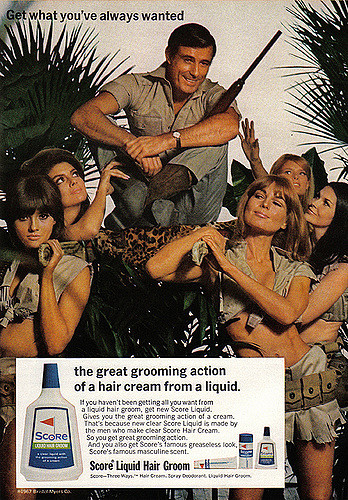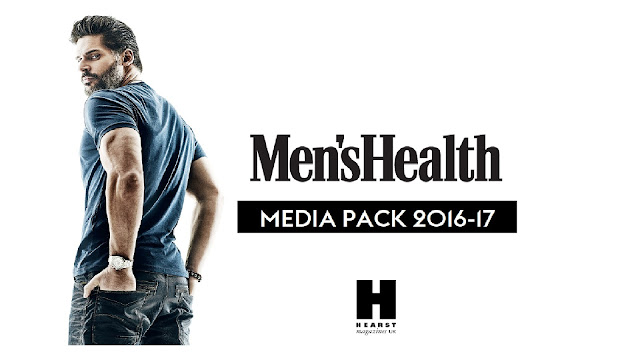Magazines: Men's Health CSP analysis
1) Write a one-paragraph summary of your notes for each key concept from the booklet:
Media Language (e.g. conventions, narrative, genre etc.)
The January/February edition of Men's Health magazine, featuring renowned actor Vin Diesel, features many conventions that reinforce the traditional stereotypes regarding masculinity. Firstly, the central image is a medium long shot of Vin Diesel, showing off his physique. The way he is standing also further accentuates his muscles and leads him to appear very well built. This dominant stance, along with his serious facial expression, highlights the hypermasculinity image and leads the audience to believe that this is what a 'man' should look and act like.
The colour scheme further reinforces the hypermasculinity. The magazine cover consists mostly of blues, blacks and greys. These are colours that are traditionally associated with men. (Gender is a performance- Judith Butler) The only other colour used is red. Red is only used to underline some keywords such as 'stronger core' and 'T-shirt arms'. Red is a vibrant and strong colour that draws a lot of attention from the audience. This means that the writers purposely used red under these phrases to highlight their importance; they are suggesting that a 'strong core' and 't-shirt arms' are essential for a man to have.
However, there are a few aspects of the magazine that suggest a new and more open-minded representation of men, where gender is more fluid. There are many cover lines about losing weight- 'Blast body fat', 'Lose 8kgs fast', 'Demolish junk food cravings'- and this is a topic that is traditionally only associated with women and women's magazines. This shows that Men's Health is changing with the times to reflect the current representations of men. (David Gauntlett- masculinity is changing)
Media Industries (e.g. Hearst Communications)
Hearst Communications is an extremely successful corporation that publishes daily and weekly newspapers and magazines. They sell over 4 million magazines a month, have 17 million UK digital users and 22 million fans and followers through social media platforms. Their magazines include Men's Health, Cosmopolitan, Harper's Bazaar and many more.
Media Audiences (e.g. demographics, psychographics, pleasures)
Men's Health is the biggest men's magazine brand in the world. It provides readers with information and expert advice on many topics, including fitness, fashion, nutrition, relationships, travel, technology and finance. The magazine has even won two awards- General excellence and best cover (2015) and Advertising Age Magazines of the Year award (2017).
The type of men to read Men's Health would be aged around 25-44, be in the ABC1 demographic and are well educated. They have a lot of disposable income to spend (as proven by the many expensive brands and products advertised in the magazine- Dolce & Gabaa, Breitling watches, etc.
Media Representations (e.g. masculinity)
Masculinity is usually associated with young men. However, this magazine and this feature, in particular, features many older men and shows how inspiring they are. This is an effective way of motivating their audience to stay fit and healthy. It also challenges the stereotype of older people being lazy and unfit.
Furthermore, the magazine references mental health on the front cover of the issue ('#Slay Winter Blues') and this highlights the changing representation of men.
2) Identify three specific aspects/conventions (e.g. cover line, colour scheme, text, image etc.) from each page of the CSP that you could refer to in a future exam. Explain why that particular aspect of the CSP is important - think about connotations, representations, audience pleasures, reception theory etc.
Front cover: Vin Diesel
Written above.
Editor's Letter and contents page
Feature: True Grit - 'The Marathon Man'
3) Type up three media theories that you think are particularly relevant to analysing Men's Health and explain why they are significant:
4) Type up three quotes from the booklet that you think are particularly useful for analysing Men's Health and explain why they are significant:
Media Language (e.g. conventions, narrative, genre etc.)
The January/February edition of Men's Health magazine, featuring renowned actor Vin Diesel, features many conventions that reinforce the traditional stereotypes regarding masculinity. Firstly, the central image is a medium long shot of Vin Diesel, showing off his physique. The way he is standing also further accentuates his muscles and leads him to appear very well built. This dominant stance, along with his serious facial expression, highlights the hypermasculinity image and leads the audience to believe that this is what a 'man' should look and act like.
The colour scheme further reinforces the hypermasculinity. The magazine cover consists mostly of blues, blacks and greys. These are colours that are traditionally associated with men. (Gender is a performance- Judith Butler) The only other colour used is red. Red is only used to underline some keywords such as 'stronger core' and 'T-shirt arms'. Red is a vibrant and strong colour that draws a lot of attention from the audience. This means that the writers purposely used red under these phrases to highlight their importance; they are suggesting that a 'strong core' and 't-shirt arms' are essential for a man to have.
However, there are a few aspects of the magazine that suggest a new and more open-minded representation of men, where gender is more fluid. There are many cover lines about losing weight- 'Blast body fat', 'Lose 8kgs fast', 'Demolish junk food cravings'- and this is a topic that is traditionally only associated with women and women's magazines. This shows that Men's Health is changing with the times to reflect the current representations of men. (David Gauntlett- masculinity is changing)
Media Industries (e.g. Hearst Communications)
Hearst Communications is an extremely successful corporation that publishes daily and weekly newspapers and magazines. They sell over 4 million magazines a month, have 17 million UK digital users and 22 million fans and followers through social media platforms. Their magazines include Men's Health, Cosmopolitan, Harper's Bazaar and many more.
Media Audiences (e.g. demographics, psychographics, pleasures)
Men's Health is the biggest men's magazine brand in the world. It provides readers with information and expert advice on many topics, including fitness, fashion, nutrition, relationships, travel, technology and finance. The magazine has even won two awards- General excellence and best cover (2015) and Advertising Age Magazines of the Year award (2017).
The type of men to read Men's Health would be aged around 25-44, be in the ABC1 demographic and are well educated. They have a lot of disposable income to spend (as proven by the many expensive brands and products advertised in the magazine- Dolce & Gabaa, Breitling watches, etc.
Media Representations (e.g. masculinity)
Masculinity is usually associated with young men. However, this magazine and this feature, in particular, features many older men and shows how inspiring they are. This is an effective way of motivating their audience to stay fit and healthy. It also challenges the stereotype of older people being lazy and unfit.
Furthermore, the magazine references mental health on the front cover of the issue ('#Slay Winter Blues') and this highlights the changing representation of men.
2) Identify three specific aspects/conventions (e.g. cover line, colour scheme, text, image etc.) from each page of the CSP that you could refer to in a future exam. Explain why that particular aspect of the CSP is important - think about connotations, representations, audience pleasures, reception theory etc.
Front cover: Vin Diesel
Written above.
Editor's Letter and contents page
- Uses 'iPhone'
- French pun ('you can't du pain and gain')
- Ski Season holiday
- Editor talks to the audience as if they're his friend but still uses very good vocabulary
- Mental health is once again mentioned
Feature: True Grit - 'The Marathon Man'
- He's much older than the 'average masculine man'
- Has achieved so much
- Inspires audience
- The gear he is wearing is advertised
3) Type up three media theories that you think are particularly relevant to analysing Men's Health and explain why they are significant:
- Lester and Ross (2003) - the media continue to stereotype because advertisers require pictures that can be easily understood.
- Brian Pronger (1990) - "Gender is a myth that justifies, expresses, and supports the power of men over women."
- David Gauntlett - Masculinity is changing.
4) Type up three quotes from the booklet that you think are particularly useful for analysing Men's Health and explain why they are significant:
- Tim Edwards (1997) - "The content of these representations remains extraordinarily fixed. The men concerned are always young, usually white, particularly muscular, critically strong-jawed, clean shaven, healthy, sporty, successful, virile and ultimately sexy" - this is exactly how Men's Health is
- Douglass Kellner (1995) - "Radio, television, film and other products of the culture industries provide the models of what it means to be male or female"




let me suck you off please
ReplyDeleteKamagra helpt bij het ontspannen van de bloedvaten in de penis, waardoor er meer bloed naar het gebied kan stromen. Dit helpt bij het krijgen en behouden van een erectie tijdens seksuele stimulatie. Als je Kamagra wilt bestellen, is het belangrijk om de juiste dosering en gebruiksinstructies te volgen. Kamagra Bestellen
ReplyDeleteGör din akuta eller kroniska smärta mer uthärdlig när du köper tramadol online. Kunder som använder denna medicin börjar känna smärtlindring inom bara en timme efter att ha tagit en kapsel. Det finns inget behov av att stå upp medan du har ont – allt du behöver göra är att besöka vårt onlineapotek så gör vi resten. Köp Tramadol Online
ReplyDeleteThis is really nice information you posted, It's very informative and definitely, will be helpful for those who are looking for men's mental health services. To know more about visit Cognitive Clarity
ReplyDelete